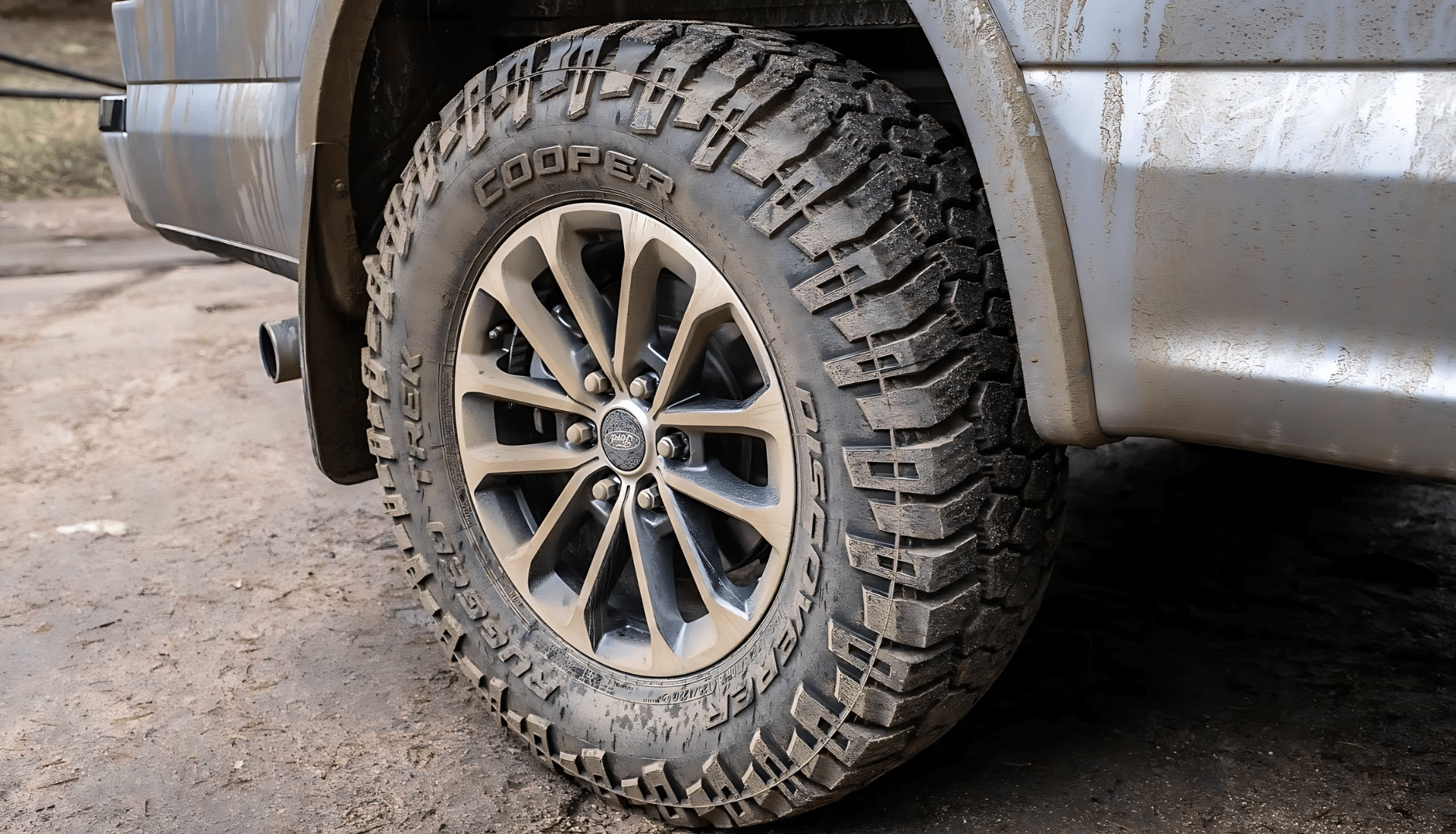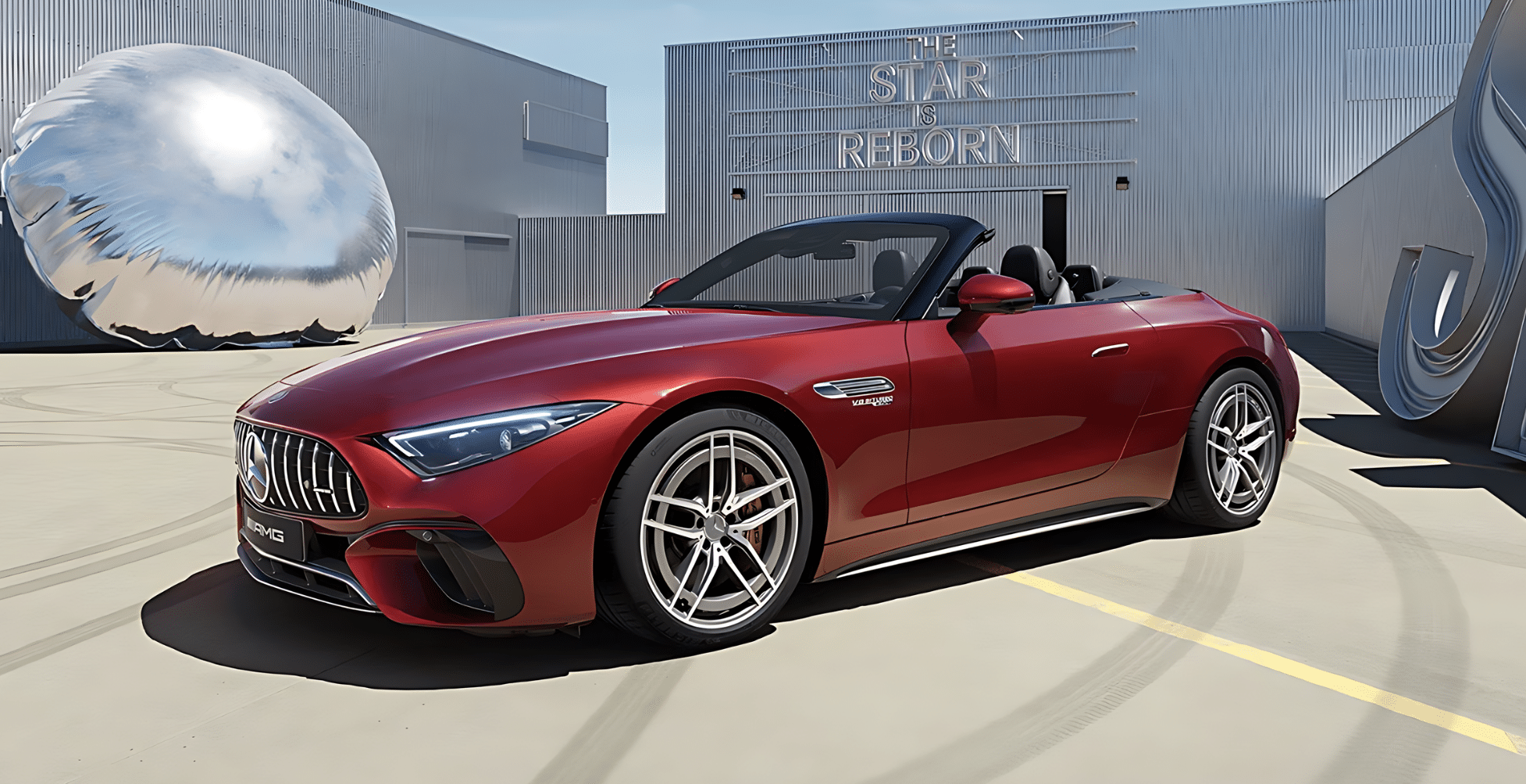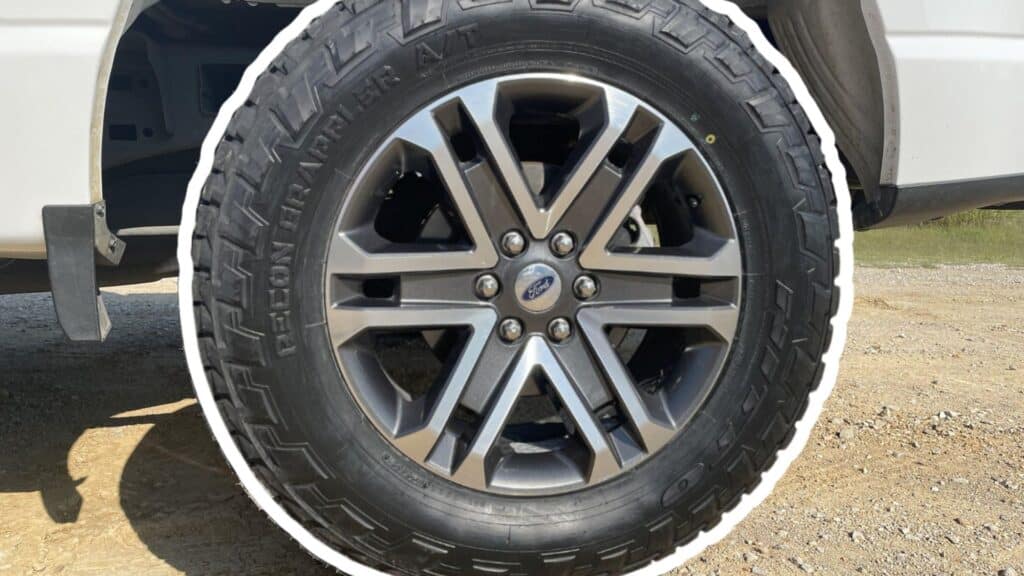Have you ever wondered why some tires have “SL” written on them? You’re not alone.
Many drivers see these letters but don’t know what they mean. SL stands for Standard Load, and it’s more important than you might think.
This guide will clear up any confusion about Load Range SL tires. By the end, you’ll know exactly what SL means, how it affects your car’s performance, and why it matters for your safety on the road.
I’ll look into the key features of SL tires, compare them to other load ranges, and help you decide if they’re right for your vehicle.
If you’re buying new tires or just curious about the ones you have, this guide has got you covered.
What is Load Range?
Load Range measures how much weight a tire can safely handle. It is a tire’s strength rating. It tells you how much air pressure the tire can hold and how much weight it can carry.
Load Range matters a lot for your car. It helps keep you safe by ensuring your tires handle your car’s weight and any extra stuff you carry.
The right Load Range also helps your car run smoothly and use less gas. If you pick tires with the wrong Load Range, your vehicle might not drive, and you could even have an accident.
People previously counted a tire’s layers (or plies) to determine its strength. More layers meant a stronger tire. But nowadays, tire makers use better materials.
They can make strong tires with fewer layers, so we switched from discussing ply ratings to Load Range.
When tires are examined, the Load Range is shown as letters like SL, XL, or C. Each letter indicates how strong the tire is.
Understanding Load Range SL
Load Range SL is a common tire type on many cars. SL means “Standard Load.” These tires are made for normal driving and are what most people use daily.
When you look at your car’s tires, you might see “SL” on the side.
This tells you that these tires can handle the usual weight of your vehicle and passengers without needing extra strength.
SL tires can handle up to 35 PSI of air pressure. PSI stands for “pounds per square inch.” This is the most air you should put in these tires to keep them safe and working well.
These features make SL tires great for everyday use. They work well on highways, city streets, and most roads you drive on regularly.
They give you a smooth ride and help your car use gas efficiently.
Advantages of SL Tires

SL tires offer several perks, making them a top pick for many drivers. Let’s dive into why these tires might be a good fit for your car:
1. Fuel Savings
SL tires are designed to roll more easily on the road. This means your car doesn’t have to work as hard to move, which saves fuel.
You might notice you’re stopping at the gas station less often. Over time, this can add up to real savings in your pocket.
2. Smooth Rides
Driving with SL tires, you’ll likely feel fewer bumps and jolts. These tires are good at absorbing small road imperfections.
This can make your daily commute or long road trips more comfortable. Your passengers might thank you for the smoother journey!
3. Quiet Operation
SL tires tend to make less noise when you’re driving. This can make your car feel more peaceful inside.
You might find it easier to chat with passengers or enjoy your music without tire noise getting in the way.
4. Cost-Effective
SL tires often have a lower price tag than other tire types. This makes them a smart choice if you want good tires without spending too much.
Plus, because they help save on gas, they can continue to save you money even after you buy them.
5. Daily Driver Friendly
SL tires are made for driving, which most people do every day. They work well on city streets, highways, and most normal roads.
If you mainly use your car for commuting, errands, and the occasional road trip, SL tires are likely a good match for your needs.
You opt for a balance of comfort, efficiency, and value by choosing SL tires.
Limitations of SL Tires
While SL tires have many good points, they’re imperfect for every situation. It’s important to know where these tires fall short. Let’s look at some of their main limitations:
1. Shorter Lifespan
SL tires tend to wear out faster than some other types. If you drive a lot or encounter rough roads, you might need to replace these tires more often.
This is something to think about when you’re planning your tire budget.
2. Load Limits
If you often carry a lot of weight in your car or need to pull a trailer, SL tires might not be up to the task. They’re made for normal loads.
Putting too much weight on them could lead to problems or even be unsafe.
3. Not for Off-Road
SL tires are built for regular roads, not rough terrain.
If you like to go off the beaten path, these tires probably won’t give you the grip and toughness you need.
They could get damaged easily on rocky or muddy trails.
4. Vehicle Size Matters
SL tires might not be strong enough if you have a big SUV or a truck. These larger vehicles often need tires that can handle more weight.
Using SL tires on a vehicle that’s too heavy could lead to poor performance or safety issues.
5. Weather Worries
While SL tires work well in normal conditions, they might struggle in harsh weather.
Deep snow, icy roads, or extremely hot pavement could challenge these tires.
Comparison of Load Ranges SL Tires with Others
| Feature | SL (Standard Load) Tires | XL (Extra Load) Tires | LT (Light Truck) Tires |
|---|---|---|---|
| Strength | Regular sidewalls, suitable for standard loads | Stronger sidewalls can handle more air pressure | Much stronger sidewalls, designed for heavy-duty work |
| Load Capacity | Standard load capacity for everyday driving | About 10% more load capacity than SL tires of the same size | It can carry significantly more weight, which is ideal for trucks |
| Performance | Smooth ride, good for daily use | Better handling under heavy loads, slightly firmer ride | Built for off-road and heavy-duty tasks, rougher ride |
| Cost | Generally more affordable | Higher cost due to increased strength | Typically more expensive, designed for specific uses |
| Off-Road Ability | Not suitable for off-road conditions | Limited off-road capability | Good off-road performance handles rough terrain well |
| Comfort | Smooth and comfortable ride | It is a firmer ride, especially when fully loaded | A rougher ride prioritizes durability over comfort |
| Handling | Suitable for standard vehicles, might struggle with heavy loads | Better handling when fully loaded | Best for heavy-duty vehicles may overperform on light vehicles |
| Fuel Use | Efficient fuel usage, ideal for standard cars | Slightly higher fuel consumption due to extra weight | It can reduce fuel efficiency when used on lighter vehicles |
| Safety | Safe for standard driving conditions | Safer under heavy loads, especially in challenging conditions | Provides safety for heavy-duty tasks, overkill for light use |
SL Tires in Specific Applications

Choosing the right tires for your vehicle is like picking the right shoes for an activity. Here are the details about where SL tires fit best and where they might not be the best choice.
1. Good Fits for SL Tires
- Sedans: SL tires are perfect for most sedans. These lightweight cars don’t need extra-strong tires for normal driving.
- Coupes: SL tires usually work well with sports cars and coupes. They provide a good balance of comfort and performance for these sleek vehicles.
- Small Crossovers: Many small crossovers can safely use SL tires. These vehicles are often built on car platforms and don’t need heavy-duty tires.
- Hatchbacks: Compact cars and hatchbacks are ideal for SL tires. The tires’ strength matches well with these lighter vehicles.
- Minivans: Many minivans can use SL tires for everyday family driving. They provide a smooth ride for transporting kids and groceries.
2. Not Ideal for SL Tires
- Large SUVs: Bigger SUVs often need stronger tires. SL tires might not handle the weight well, especially when fully loaded.
- Pickup Trucks: Most pickup trucks require tougher tires. Even if you’re not hauling heavy loads, the truck’s weight alone often needs more than SL tires can offer.
- Towing Vehicles: If you tow trailers or boats, SL tires are usually not strong enough. The extra weight puts too much stress on them.
- Off-Road Vehicles: Vehicles meant for off-road use need tires with tougher sidewalls and deeper treads than SL tires provide.
Why SL Tires Work for Some Cars and Not Others
SL tires are designed for vehicles with lighter weights. They can handle the load of a typical car but might struggle with heavier vehicles.
Cars mostly used for commuting and everyday trips are well-suited for SL tires. Vehicles used for work or adventure often need stronger options.
Using SL tires on a heavy vehicle can be unsafe. The tires might not be able to handle sudden turns or stops as well as they should.
SL tires offer a comfortable ride for lighter vehicles.
However, this comfort might come at the cost of needed strength and durability for trucks and large SUVs.
Practical Considerations for Using Load Range SL Tires
| Scenario | When to Use SL Tires | When Not to Use SL Tires |
|---|---|---|
| Daily Commutes | Ideal for regular drives to work and back | Not applicable |
| City Driving | Great for errands around town, providing a smooth ride | Not suitable for off-road driving |
| Highway Trips | Quiet and comfortable for long highway drives | Not recommended for towing trailers |
| Family Cars | Ideal for regular cars and small SUVs for family outings | Not strong enough for heavy loads or big vehicles |
| Towing | Not recommended | XL or LT tires are better suited for towing |
| Off-Road Adventures | Not suitable | Look for off-road-specific tires |
| Heavy Loads | Not recommended | XL tires are a better fit for carrying heavy loads |
| Big Vehicles | Not strong enough | LT tires are often needed for large trucks and SUVs |
Conclusion
Now you know what Load Range SL means and how it fits into your driving life. These tires are great for many everyday cars, giving smooth, quiet rides and helping save gas.
But remember, they’re not for every vehicle or situation. You might need tougher tires if you drive a big SUV, haul heavy loads, or love off-road adventures.
Always check your car’s manual or ask a tire expert to ensure you use the right tires. The right choice keeps you safe and helps your vehicle run its best.
Whether commuting to work or taking a family road trip, SL tires could be just what you need for a comfortable, efficient drive.
Make an informed choice, and enjoy the road ahead!
Frequently Asked Questions
How Long do SL Tires Typically Last?
With proper care, SL tires can last 50,000 to 80,000 miles. However, this varies based on driving habits and road conditions.
Can I Mix SL Tires with Other Load Ranges?
It’s not advisable. Using different load ranges on the same vehicle can affect handling and safety, so stick to one type.
What are the Long-Term Impacts of Using SL tires on Fuel Efficiency and Tire Wear?
SL tires boost fuel efficiency in the long term due to low rolling resistance. They wear evenly but may need earlier replacement than tougher tires if misused.


